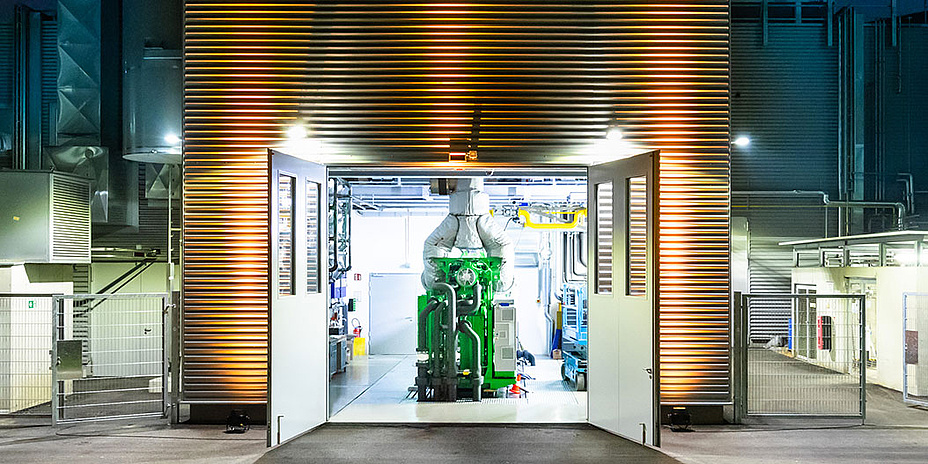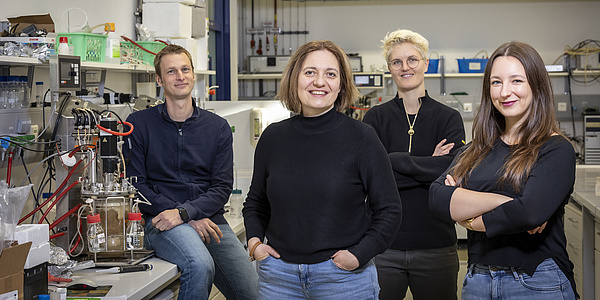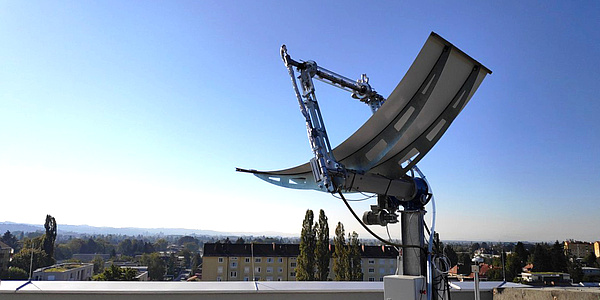Dynamic giants

News + Stories: What exactly is a large engine?
Andreas Wimmer: Any engine that is larger than the ones used in commercial vehicles is generally referred to as a large engine. The threshold is a displacement volume of around 2.5 litres per cylinder. Rather than appearing on the roads, engines like these are used in power generation plants, ship and locomotive propulsion systems, as well as in mining trucks and other industrial applications.
Size apart, are there qualitative differences between large engines and the smaller engines used in cars and trucks?
Nicole Wermuth: In the past, large engines for power generation were mainly optimised to operate at full load, as they were primarily used for base load supply with little load variation. However, due to the increasing proportion of power from wind and solar energy in the electricity grid – as well as the associated fluctuations in production – the focus in power generation using large engines is shifting towards highly dynamic solutions that enable such peaks and troughs to be evened out. As a result, development activities are increasingly moving in the direction of improving the dynamic capabilities of large engines, whereas the situation is exactly the other way round for car engines, which until now have always operated under very dynamic loads. With the advent of hybrid concepts, steady-state operation is more prevalent to keep fuel consumption as low as possible. The requirements placed on both large and small engines have changed significantly.
If large engines need to become more dynamic, what does that mean in design terms?
Nicole Wermuth: The combustion concept has to be adapted – turbocharger design, camshafts and valve timing as well as every aspect of the engine and system control. In one such example, electrically-assisted turbochargers are deployed that use both exhaust gas enthalpy and electrical energy to reach a higher load state more quickly.
Where are dynamic large engines like these already in use?
Andreas Wimmer: The coastal cogeneration power plant in Kiel, northern Germany is a case in point. Here, 20 INNIO Jenbacher Type 9 gas engines with a total output of 190 MW are in use. The LEC (Large Engines Competence Center) and TU Graz had a significant hand in co-developing their combustion process. Thanks to their modular design, the engines can be operated very flexibly, meaning that the power plant can respond very quickly to changes in the grid. So, if it suddenly clouds over in the summer and solar energy production dips significantly as a result, the engines can make up for it efficiently, in a matter of just a few minutes.
Given the goal of a high share of wind and solar energy in power production, this degree of flexibility for large engines will become even more important in the future. Accordingly, large engines are set to become indispensable as "enablers" for climate-neutral power generation. The importance of coupling plant operating strategies with precise prediction models will also rise in various areas including the planning of necessary maintenance work or incorporation of weather forecasts into engine start-up optimisation. Increasingly, AI-based modelling approaches will be used for this purpose.
At present, the engines in Kiel are still powered by natural gas...
Andreas Wimmer: Yes, but there is a clear declaration of intent from the operators in Kiel to completely switch over to hydrogen by 2035. The hydrogen will be produced using the wind energy that is available in the region, and it will also be stored locally. So, this will enable climate-neutral heat and power to be produced for a large number of consumers.
Are there other differences in the requirements for large engines compared to smaller engines?
Nicole Wermuth: Essentially, efficiency is much more critical for large engines than it is for smaller ones, and the same goes for longevity. These are two aspects where large engines significantly differ from the engines we see on the road.
Why is efficiency even more important in this setting than it is for cars?
Wermuth: Because fuel makes up a much larger proportion of the total lifecycle costs. For most large-engine applications, the proportion of fuel costs is well over 90%.
How long do large engines like these last?
Andreas Wimmer: A very long time! And that is also a highly significant sustainability dimension. In power generation, they generally last at least ten years, in the marine sector it could be 40, 50 years or more. Locomotive engines also have very long service lives.
Nicole Wermuth: What really matters in terms of lifespan is not so much the years between commissioning and decommissioning, but the actual operating hours. While car engines are idle most of the day, large engines typically run around the clock. And under high loads: engines used in base load power generation rack up about 8,000 full load hours per year.
Andreas Wimmer: It is because large engines have a very long service life that developing retrofit solutions is so important: the kind of solutions that enable us to convert the engines as easily as possible to hydrogen, ammonia or other alternative fuel sources in the future, and keep them running for a long time. This is also one of the main focuses of the COMET K1 program LEC GETS (Green Energy and Transportation Systems) currently being worked on at the LEC in cooperation with TU Graz and around 30 other partners from science and industry, in addition to research into entirely new concepts for the use of climate-neutral fuels in engines.
This research is anchored in the Fields of Expertise “Mobility & Production” and “Sustainable Systems”, two strategic foci of TU Graz.
Since the 1990s, Graz has been home to world-renowned research in the field of large engines.
The Institute for Thermodynamics and Sustainable Propulsion Systems (ITnA) at TU Graz and the Large Engines Competence Center (LEC) are working together on the development of sustainable energy and transport systems and thus on the decarbonization of this sector.
While the institute is dedicated to basic research and teaching, the LEC conducts application-oriented research, in particular within the framework of the COMET K1 research program LEC GETS (Green Energy and Transportation Systems), the results of which flow directly into teaching. The necessary experimental investigations are largely carried out at the LEC's unique test bench infrastructure on Campus Inffeldgasse of TU Graz. In addition to paid scientific work on exciting topics, students also have access to interesting career paths in large engine research at the Graz site.
You can find more research news on Planet research. Monthly updates from the world of science at Graz University of Technology are available via the research newsletter TU Graz research monthly.
Kontakt
Nicole WERMUTH
Univ.-Prof. Dr.-Ing.
TU Graz | Institute for Thermodynamics and Sustainable Propulsion Systems; CSO LEC GmbH
Phone: +43 (0)316 873 30087
nicole.wermuth@tugraz.at
Andreas WIMMER
Ao.Univ.-Prof. Dipl.-Ing. Dr.techn.
TU Graz | Institute for Thermodynamics and Sustainable Propulsion Systems
Phone: +43 (0)316 873 30100
wimmer@tugraz.at



